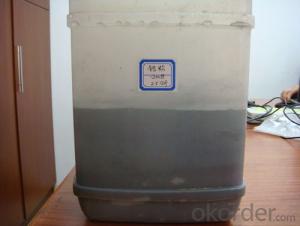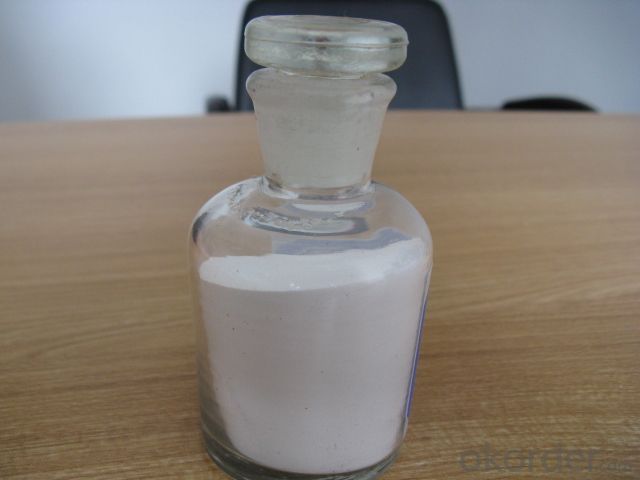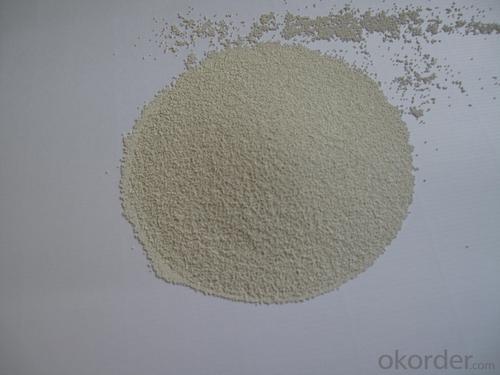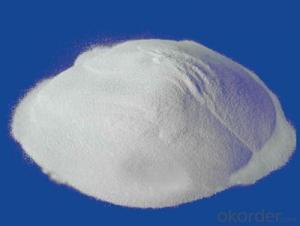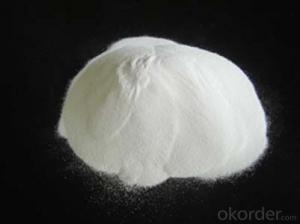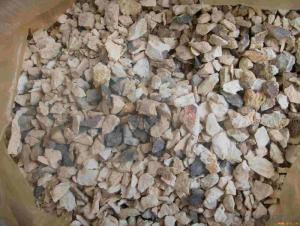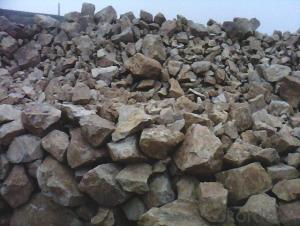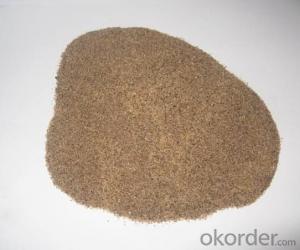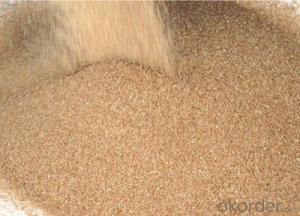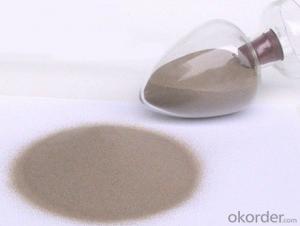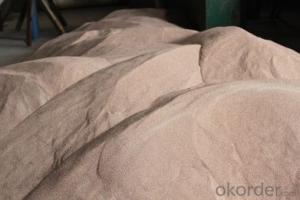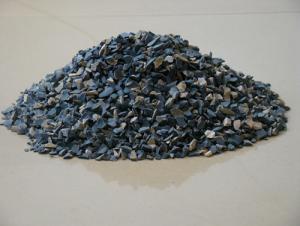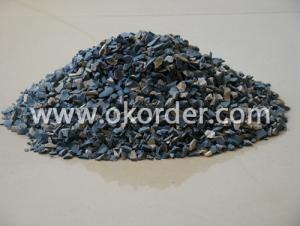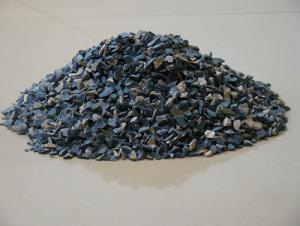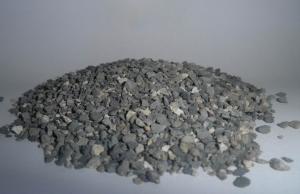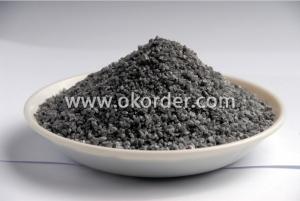Raw Materials for Refractory:Zircon Sand and Zircon Flour/Powder
- Loading Port:
- Tianjin
- Payment Terms:
- TT OR LC
- Min Order Qty:
- 25 m.t.
- Supply Capability:
- 3000 m.t./month
OKorder Service Pledge
OKorder Financial Service
You Might Also Like
Refractory Material/ Zircon Sand and Zircon Flour/ Powder
1.Structure of Zircon Sand and Zircon Powder
Zircon Sand, also known as Zircon, is a Chemical Compound, a Silicate of Zirconium, andits corresponding Chemical Formula is ZrSiO4. It occurs in nature as the Zircon, a Silicate Mineral. Ore is mined from natural deposits and concentrated by various techniques. It is separated from sand by Electrostatic and Electromagnetic methods. It can be made by fusion of SiO2 and ZrO2 in an arc furnace. It is usually colorless, but impurities induce various colorations. It is a fine white mineral powder that is chemically inert and stable.It is insoluble in water, acids, alkali and aqua regia. The tiny, round, solid ball shape of Zircon Sand provides a greater surface area for improved performance and dispersion in its application. It is also sometimes known as Zircon Flour, Zircon Powder, or Zirconium Silicon Oxide. Zircon is the generic name for Zirconium Silicate; the trade names are different (for example, Zircopax, Zircosil). It is used as an ingredient for its functional properties in several Industries.
2.Main Features of Zircon Sand and Zircon Powder
1 Tiny, round, solid ball shape provides greater surface area for improved performance and dispersion in its application
2 High refractory rating, lower specific gravity rating, and higher service temperature produces greater yield
3 With lower bulk density, it offers better air permeability for better performance as a result of its overall physical characteristics
3.Main usage of Zircon Sand and Zircon Powder
Ceramic Industries – Wall Tiles , Floor Tiles , Roofing Tiles
Sanitary Ware Industries
Pottery Industries
Porcelain Glazes
Frit for Glaze and Enamels
Ceramic Colour Industries
Admixture for Glass , Opal Glass
Picture Tube Industries
Foundries , Investment Casting Industries
Special Refractories , Castable Refractories
Zircon Bricks , Zirconium Oxide Industries
Epoxy Resin , Special Paints Industries
4. Zircon Sand and Zircon Powder Images
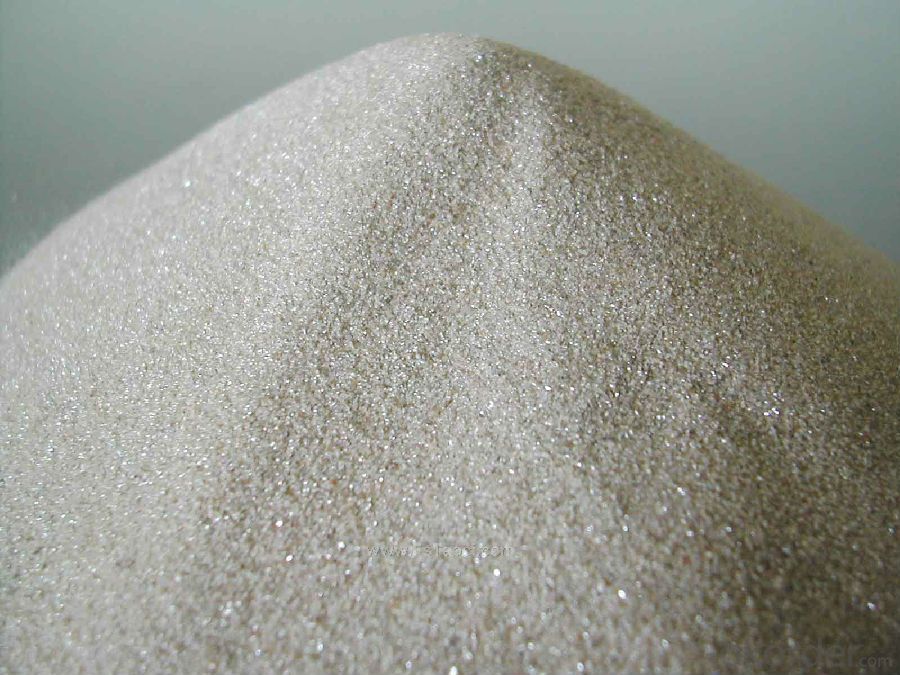


5. Zircon Sand and Zircon Powder Specification
Specific gravity | 4.7 |
Bulk density | 170 – 180 lb/ft³ (2700 kg/m³) |
Hardness | 7.5 Mohs |
Angle of repose | 30° |
Melting point | 4000° F (2200° C) |
Thermal stability | no change to 3090° F (1700°C) |
Loss on ignition | 0.02 – 0.12% |
6.FAQ of Zircon Sand and Zircon Powder
1). Q: Are you a factory or trading company?
A: We are a factory.
2). Q: Where is your factory located? How can I visit there?
A: Our factory is located in China. You are warmly welcomed to visit us!
3). Q: How can I get some samples?
A: Please contact me for samples
- Q: What are the materials for refractory materials? What are their names?
- Neutral refractory is mainly composed of alumina, chromium oxide or carbon. Corundum products containing more than 95% of alumina are a kind of high quality refractory materials with a wide range of uses. Chrome brick by using chromium oxide as the main component of the corrosion resistance of steel slag is good, but the poor heat shock resistance, high load low deformation temperature. Carbon refractories with carbon bricks, graphite and silicon carbide products, low coefficient of thermal expansion, high thermal conductivity, heat vibration performance, high strength, corrosion resistance to acid and salt, without wetting of the metal and slag, light. It is widely used as lining material of high temperature, and also used as lining of autoclave in petroleum and chemical industry.
- Q: Is fireclay poisonous?
- Refractory materials are typically oxides, alumina, magnesium oxide and aluminate cement and etc, which are non-toxic.
- Q: How is the grading of the level A new material fire insulation material?
- The thermal insulation materials are generally divided into level A and level B according to the flame rating. Level A is the non-combustible material, and level B is the combustible materials. The level B material is to blame for the fire in Shenyang hotel in CCTV building a few years ago . At present, the level A materials are widely used, with some prices even cheaper than the level B material. A level is roughly divided into insulation mortar, phenolic board, rock wool board and foam cement board, ect.
- Q: Can anyone say something about the curtain wall fire-proof material key sealing point?
- Hello. 1. Gaps between the curtain walls and floors of all tier and partitions outer edge should be sealed with non-combustible material or flame retardant materials. Filling material can be rock wool or mineral wool, whose thickness should be not less than 100mm and should meet the designed fire endurance requirements, forming fire and smoke prevention areas between floors and rooms. Fireproof layer should use galvanized steel bearing with thickness of not less than 1. 5mm, and should not use aluminum plate. Gaps between bearing plate and main structure, curtain wall structure and the bearing plate should be sealed by fireproof sealant; fireproof sealant should has fireproof inspection reports granted by statutory testing organizations. 2. When building designs requiring transparent effect of fire compartment and separation, monolithic fire-resistant glass or hollow and laminated fire-resistant glass nade by monolithic fire-resistant glass can be adopted. 3. Windowsills-free curtain walls, incombustible entities skirt wall or fireproof glass wall whose fire endurance is not less tan 1.0 hour and height is not less than 0.8m should be set on the outer edge of each floor. The thickness of reinforced concrete floor or height of the side beams should be counted when calculating the height of the skirt wall. 4. Fire protection layer should not contact directly with the glass curtain wall, and the side towards the glass of fireproof materials should be covered with the decorative material. 5. Glass units of the same curtain wall should not cross two fire?compartments.
- Q: How to prolong the furnace age of Induction furnace by using fireproof materials?
- magnesia solid materials have thermal endurance and erosion/ performance and its change of temperature is likely to cause cracks. properties of materials (aluminum) in such case have to be taken into consideration.
- Q: What are the classifications of refractory? Which category does steel ladle castable belong to?
- Silmo brick, alumina-magnesia brick; 2. coke oven, aluminum silicate... 8 categories)& nbsp, teeming ladle, glass furnace ...... 7 categories) high alumina refractory products (blast furnace, electric furnace, cement kiln, magnesia, glass furnace; 3. high alumina refractory mortar (high alumina, glass kiln ...... 6 categories) special refractory products (magnesia-carbon bricks, aluminum-carbon bricks, MgO-C, shapeless refractory products& nbsp, light weight, sliding plate bricks, cement kilns: There are 26 categories in refractory products, clay, calcium silicate, ceramsite lightweight... 10 categories) & nbsp, air heating furnace, sheets; 1 refractory castable (alumina-magnesia, blocks, resistance furnace... 11 categories) alkaline refractory products (magnesia. First, thermal insulation refractory products (ceramic fiber; clay, diatomaceous earth, steel fibre reinforcement...14 categories) & nbsp, silicon carbide brick ...... 19 categories) Second, China is the largest refractory production country in the world, clay, non-water cannons mud, converter, siliceous, teeming ladle, profiled) siliceous refractory products (coke oven, dense shaped refractory products (all kinds of bricks, electric furnace roof, glass kiln ...... 5 categories) clay refractory products (blast furnace, high alumina ...... 4 categories) three
- Q: Does anyone know fire-proof material of fireproof wooden door?
- Fireproof wooden door goes through the flame treatment, so it can prevent fire. Its principle: Fire-retardant treated timber has become flame retardant material itself and its fire endurance has increased. The commonly used method of fire retardant treatment for timber including: Spraying method, soaking method, boiling method, vacuum method, vacuum-pressure method.
- Q: What does refractory mean?
- Acid refractory material usually refers to refractories with SiO2 content greater than 93%. Its main characteristic is that it can resist acid slag corrosion at high temperature, but it is easy to react with alkaline slag.
- Q: Who know about the knowledge of acid refractory material? Please explain in detail.
- Refers to the silicon dioxide
- Q: What are the materials used in refractory material processing?
- From the raw material and refractory materials can know, silicides, corundum, clay, diatomite, asbestos, metal oxides, sulfides, carbides and so can be used in the production of refractory material processing, processing of raw materials and refractory material can be used in mechanical equipment, according to production fineness crushing machine, packaging machine equipped with lifting machine, milling machine, so, the complete set of processing production line of refractory raw materials.
Send your message to us
Raw Materials for Refractory:Zircon Sand and Zircon Flour/Powder
- Loading Port:
- Tianjin
- Payment Terms:
- TT OR LC
- Min Order Qty:
- 25 m.t.
- Supply Capability:
- 3000 m.t./month
OKorder Service Pledge
OKorder Financial Service
Similar products
Hot products
Hot Searches
Related keywords


